I think my husband thought I was crazy when I told him I was planting purslane in the garden.
He must have been remembering the times when I fought hard to pull the stubborn weed out of my garden beds.
These days, I know better. As you might have guessed, since it’s a weed, Portulaca oleracea is a tasty and useful green that grows almost without any help at all.
We link to vendors to help you find relevant products. If you buy from one of our links, we may earn a commission.
In his book “In Defense of Food: An Eater’s Manifesto,” which you can get on Amazon, author Michael Pollan called it one of the two healthiest wild plants you can eat, along with lamb’s quarters.
Most likely, the hardest thing about growing this sour green will be stopping it from growing too much.
You can make sure you have a good harvest by doing many things, such as picking the leaves at the right time of day for the best taste.
You’ll also need to know how to use the greens once you’ve harvested them, so let’s dive in.
P. oleracea is an annual succulent plant that has been seen as both a useless weed and a powerful medicine at different times in history.
It’s also called little hogweed, pigweed, fatweed, and pusley. Recently, it’s become more well-known in US culture for being a superfood.
There are many antioxidants, vitamins, and minerals in purslane. In fact, it has seven times more beta carotene than carrots.
The Portulaceae family also includes the ornamental wingpod purslane (P. umbraticola) and moss rose (P. grandiflora). Rather than being grown for food or medicine, these species are often cultivated for their flowers.
The wingpod type perennial plant has green, round leaves, reddish stems, and yellow flowers. The moss rose type annual plant grows in the desert and often has spiky leaves and flowers that can be different colors.
On the other hand, common purslane looks a bit like a tiny jade plant. The leaves, stems, flowers, and seeds can all be eaten raw or cooked.
Like arugula, but with a juicier crunch, the leaves have a citrusy and salty taste with a peppery kick.
Its small yellow flowers have five petals and yellow stamens. The plants bloom from the middle of summer to the beginning of fall. When the flowers are fertilized, they make seeds.
There are places in the US where growing this plant is limited or illegal because the US Department of Agriculture calls it a “noxious weed.”
Don’t let that put you off (unless you have reason to, depending on where you live!).
A lot of people also think of purslane as a “superfood,” and you can find it in high-end and farm-to-table restaurants all over the country.
P. This plant has become naturalized in most parts of the world, from north Africa and southern Europe, where it probably came from, to North America, where native people grew it and gathered it for food long before Europeans came.
You can also look for and eat wild plants, which usually taste stronger and more pungent.
I think cultivated purslane has a less bitter, sweeter flavor. In USDA Hardiness Zones 5 to 10, plants that are grown in gardens tend to have bigger leaves and grow more upright. That’s handy, come harvest time.
Purslane is typically propagated from seed, but you can also grow it from stem cuttings, divisions, or transplants.
When you first buy purslane seeds, you probably won’t have to buy them again because one plant can make more than 50,000 seeds over the course of its life.
You can plant this strong green directly outside once the last frost has gone away and the soil is about 60°F.
Sprinkle seeds onto moist soil and press them in lightly. Don’t cover them, as they need light to germinate. Seedlings take seven to 10 days to sprout after planting.
Once they’ve sprouted and have formed a few true leaves, thin them to eight inches apart.
You can also start seeds indoors at least three weeks before the last frost. Transplant them after they’ve grown one set of true leaves and all risk of frost has passed.
Be sure to harden them off for a few days before planting them out in the garden.
To do this, put them somewhere sheltered, like a patio, and slowly add an hour of sun to their daily routine for a week.
It’s not only the number of seeds it produces that makes purslane such a good spreader.
Every stem piece can grow a new plant. This can make your job as a gardener easier, or harder, depending on how well you can manage it.
Cut a six-inch stem from the parent plant with a sharp knife or scissors. This will help the plant grow new stems. Remove the leaves from the bottom half.
Plant the stem in potting soil with half of the stem buried underground. Place in an area with bright, indirect light, and keep the soil moist but not waterlogged.
Your cutting should start to grow after a week, and it should stay put when you gently pull on it.
You can get away with cutting off one-inch pieces of the stem and burying them in the garden, four quarters of an inch deep.
In a few weeks, you’ll start to see new plants popping out of the soil. I’ve yet to have a single cutting fail when I planted them this way.
Dig it up with a trowel, making sure to keep the roots and stems attached. Dig a new hole twice the size of the root ball.
Put the uprooted plant back in the hole, making sure it’s not any deeper than when it was planted. Then, fill the hole back up with dirt.
Remember that unless you completely dug up the plant and left nothing behind, another one will probably grow where the old one was.
Purslane needs full sun to grow best. That being said, if you want more flowers, plant your plants where they will get some shade during the day.
These plants also like it warm – the more heat, the better. Put your plants in a hot spot next to a brick fence or cement wall where other plants are having a hard time.
Purslane likes it best when the temperatures are above 70°F, and thrives even when it gets above 100°F.
You may have noticed that these plants don’t care about the soil because they can grow in cracks in the sidewalk and on the side of the road.
For best results, plant in average quality soil that’s well-draining, with a pH between 5.5 and 7.5.
You’ll get larger, juicier plants by growing in loamy, porous soil than you will in compact, poor earth. However, I find plants grown in lower quality ground have a stronger flavor.
When it comes to fertilizing, you have permission to be lazy. Purslane doesn’t need anything, but it’s always a good idea to work some compost into the soil before planting.
Watering is another area where you don’t need to overdo it. This heat-loving plant will die if it gets too much water, but if you give it even moisture, your harvest will be leafier and stronger.
As you’d expect from a succulent, it’s happiest in dry – but not parched – soil.
To see if your plant has the right amount of moisture, stick your finger into the soil. If it’s dry up to your first knuckle, it’s time to water.
Cut the plant back to two inches above the soil or harvest it all before it flowers to keep it from taking over your garden.
Apply an inch of organic mulch, such as wood chips, in midsummer to keep it from spreading.
Mulch stops the seeds of purslane from sprouting by blocking the sunlight they need. Some types of mulch, like black walnut, also have chemicals that stop plants from growing.
Purslane can also be grown in pots, where it does well because it doesn’t need to be watered every day.
Of course, this is a good way to help stop the spread of this plant, but I’ve even seen wild plants grow in my empty pots. Those seeds just want to grow!.
Purslane microgreens are tart and juicy. I grow them on my windowsill all year, and because they grow so fast, I always have some on hand.
Fill a seed tray or other wide, flat container at least half way to the top with potting mix.
Sprinkle seeds over the moistened soil and gently press them in. If you want to keep the seeds warm, put them somewhere sunny that stays around 75°F, or use a heat mat.
Keep the soil moist until they sprout, which will take about a week. After that, allow just the surface of the soil to dry out between waterings.
You can start eating the greens as soon as their first leaves, which are called cotyledons, come up from the ground. This typically happens in 14 to 21 days.
You don’t have to wait for true leaves to grow on purslane before you pick the embryonic seed leaves because they are already juicy and tasty.
I only pick microgreens when I need them and leave about a dozen seedlings alone to be moved to the garden when I’m ready to harvest them all the time.
There are a lot of different kinds, but the ones that are most often sold are “Gruner Red” and “Goldberg.”
If the garden center or nursery near you sells plants that are grown for decoration, they might have been treated with pesticides or other chemicals, and the leaves shouldn’t be eaten.
The typical garden variety, common purslane (species P. oleracea) grows low along the ground and spreads up to 18 inches once mature.
A cultivar of P. oleracea var. sativa, ‘Golden’ purslane has tender yellow-green leaves and grows to a mature size of about 10 inches tall.
P. oleracea ‘Goldgelber’ matures in 26 days, and spreads up to 12 inches wide. It grows to be about 6 inches tall when mature.
P. oleracea ‘Gruner Red’ has pink-tinted stems, much like the common purslane you have probably pulled as a weed.
Green leaves that are thick and oval-shaped and about an inch long. It can grow up to 12 inches tall when fully grown.
As a passionate gardener, I’m always on the lookout for interesting plants to add visual interest and edible crops to my garden. One plant that has caught my attention lately is purslane (Portulaca oleracea). This succulent plant produces crisp, tangy leaves and stems that can be eaten raw in salads or cooked. It’s nutritious, easy to grow, and has a reputation as a hardy summer annual. But this got me wondering – does purslane come back every year in the garden?
The Life Cycle of Purslane
To understand if purslane comes back yearly, we first need to take a closer look at its life cycle. Purslane is scientifically classified as a summer annual plant. This means it completes its entire lifecycle in a single growing season Here’s a quick rundown of the stages purslane goes through in one year
-
Germination – Purslane seeds sprout in spring once soil temperatures reach at least 15°C. This is usually sometime between March and May depending on your climate.
-
Growth & Maturation – Within 6-8 weeks after sprouting, purslane begins flowering. The small yellow blooms appear in early to midsummer. By late summer, purslane is fully mature.
-
Seed Production – Each purslane plant can produce up to 240,000 seeds! Seeds mature by late summer.
-
Death – At the season’s first hard frost, the annual purslane plant dies off completely. It does not come back the following spring.
So in most climates, individual purslane plants only survive one growing season. But what about the species as a whole?
Persistence Through Massive Seed Production
Even though individual plants die annually, purslane persists from year to year thanks to prolific seed production. Here’s why this sneaky succulent keeps popping up in your garden:
-
Purslane seeds have tremendous longevity, remaining viable in soil for up to 40 years. Each plant produces thousands of seeds, building up a massive seed bank over time.
-
The seeds lie dormant until growing conditions are ideal again. In spring, when soil temperatures rise, dormant seeds sprout and begin the purslane life cycle anew.
-
Stirring up soil brings additional purslane seeds to the surface where they can germinate. Tillage and cultivation activates more of the dormant seed bank.
So while each purslane plant only lives one season, the species carries on year after year due to the enormous reserve of seeds in the soil. These seeds ensure new plants readily appear each spring.
Perennial Tendencies in Warmer Climates
The majority of gardeners deal with purslane as a fast-growing summer annual. However, in the warmest zones (9-11), purslane may exhibit perennial tendencies. Where winters stay frost-free, purslane plants can survive year-round. They behave as short-lived perennials in these regions, coming back from roots and stems season after season.
Even in warm climates, purslane still relies primarily on seeds for reproduction. But the occasional perennial plant manages to overwinter and resprout in spring. These locations allow the plant to live longer than one year.
Managing Purslane Year to Year
Now that we understand purslane’s growing habits, let’s look at some implications for management:
-
Plan to remove purslane from garden beds annually. Don’t allow it to go to seed one season, thinking it will die off over winter.
-
In warmer zones where purslane survives as a perennial, ensure roots and stems are fully removed. Otherwise, it may resprout next spring.
-
Reduce the soil seed bank by preventing seed production. Pull plants before flowers appear.
-
Accept that purslane is nearly impossible to eradicate. Focus on limiting spread rather than eliminating it completely.
-
Allow some purslane for harvest. Its edible leaves and stems provide tasty, nutritious greens!
Key Takeaways
Does purslane come back every year? The answer depends on your climate:
-
In most regions, purslane behaves as an annual – germinating, growing, producing seeds, and dying in a single season.
-
Only in frost-free climates can purslane overwinter and return as a perennial from roots and stems.
-
Regardless of location, purslane relies on prolific seed production for species persistence and spread.
So be on the lookout for this succulent green each year in the garden. A fresh crop of purslane will likely sprout from the extensive seed bank. But be diligent about removing it from beds before flowers and seeds develop. With some persistence of your own, you can manage the recurring appearance of this tasty invader!
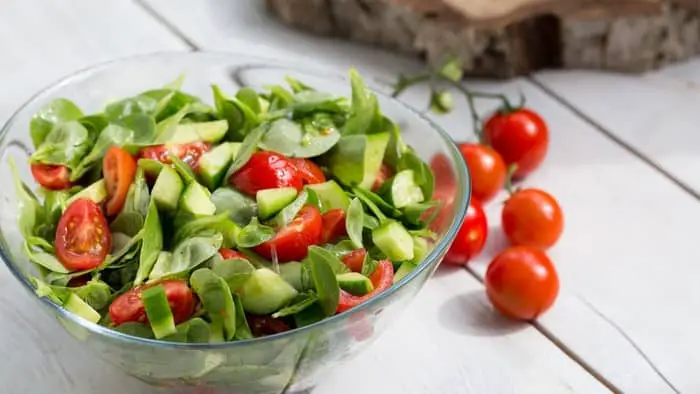
Recipes and Cooking Ideas
When it’s fresh, this vegetable has a mild flavor that goes well with many foods, like eggs, fish, lettuce, tomatoes, and cucumbers.
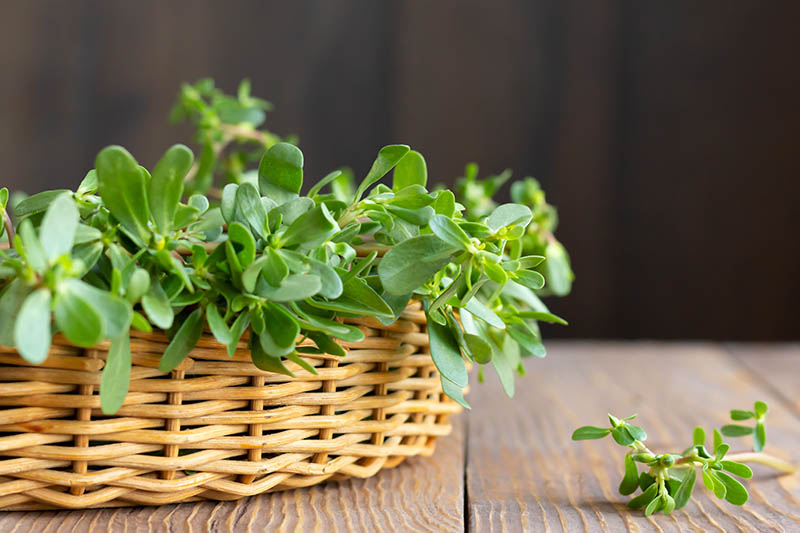
I adore pickled purslane.
To make a quick pickle, just chop the leaves and fill a jar.
Your vinegar brine of choice should be heated up. I like apple cider vinegar, water, sugar, and pickling spices mixed together. Then, pour the brine over the leaves to cover them.
Screw the lid on tightly, and refrigerate for about a week before using.
The leaves are delicious tossed in potato salad, or layered on open-faced mackerel sandwiches.
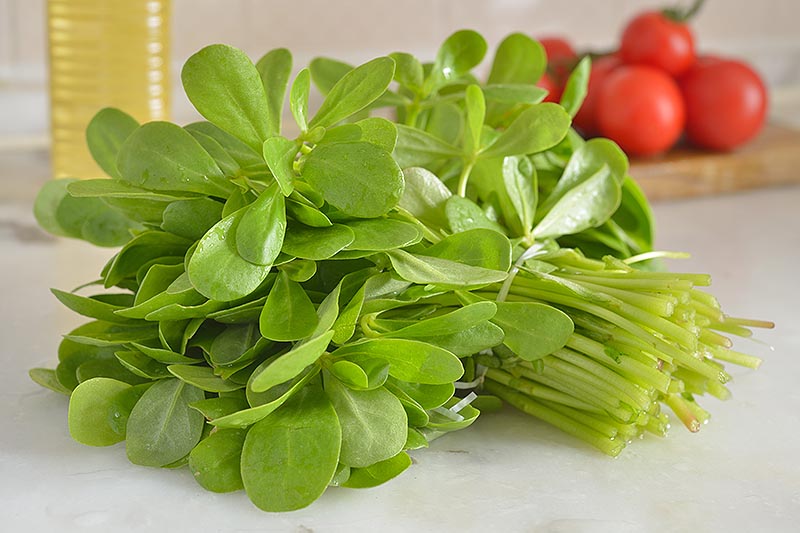
I also like to add handfuls of fresh or sauteed leaves to soups just before serving. I find chilled cucumber purslane soup to be particularly refreshing when it’s hot out.
You could also stuff trout with fresh purslane leaves in the summer and roast it in the oven with butter and lemon.
Around here, my purslane microgreens are about the only fresh thing that grows in the middle of winter. I like to mix them with pomegranate seeds and cooked barley in a grain salad.
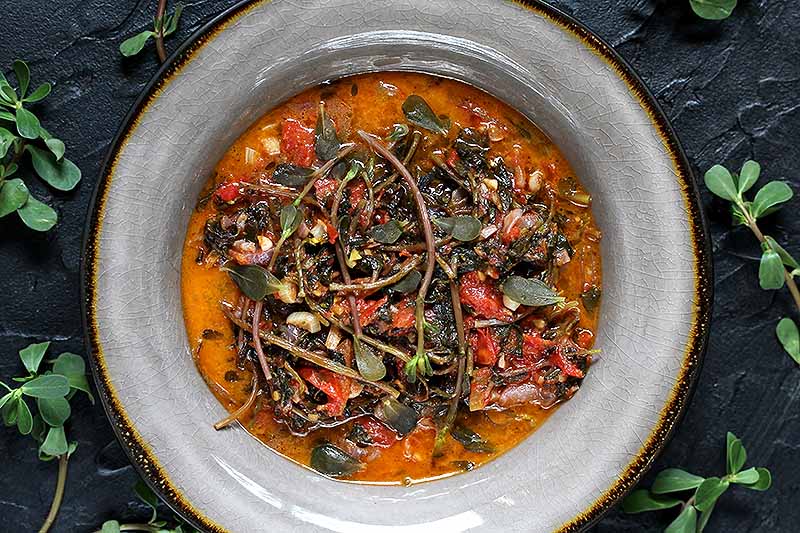
If you want to use purslane in your cooking, I suggest that you either eat it raw or cook it all the way through. If you only partially roast or boil it, it takes on a slimy texture, similar to okra.
Purslane has been touted throughout history for its medicinal qualities.
Today, there’s some evidence that it can help to reduce uterine bleeding. When eaten regularly by people with diabetes, an improvement in serum insulin levels was noted in one study.

A small clinical trial found improvement in pulmonary function when purslane was used to treat asthma.
And a study published in the Journal of Ethnopharmacology in December 2000 by K. Chan, et al., indicated that it’s useful when used topically as an anti-inflammatory.
It can also hasten wound healing, according to another study published in the Journal of Ethnopharmacology in October 2003 by A.N. Rashed, F.U. Afifi, and A.M. Disi.
At home, I like to let the dried leaves soak in olive oil for a few days to make a salve. I then put it on my skin when it’s itchy from the cold or the heat in the summer or winter.
Managing Pests and Disease
Purslane is a hardy plant. It doesn’t usually get many pests or diseases that you’ll have to fight, but here are some things to keep an eye out for:
You might come across the purslane blotchmine sawfly, Schizocerella pilicornis. Its leaf-mining larvae nibble through plant leaves to make tunnels.
These can damage leaves by leaving black or blotchy spots, and a bad infestation can wipe out a whole crop.
The pale, yellowish larvae burrow underground to pupate, and female adult sawflies emerge in late spring to insert their eggs in the edges of the leaves of plants.
The adults, which are about half an inch long and black or dark-colored, may be hard to spot because they only live for one day. The larvae eat mostly inside leaves instead of on the surfaces of them before they go to the ground to burrow in the soil and pupate.
Multiple generations can be produced per year, and purslane is the only host to this insect. This plant can be found in hemp fields where it grows as a weed along with purslane.
If you see larvae or signs that they have been eating your plants, get rid of any bugs you can by hand and cover plants with diatomaceous earth.
You can squish leaves with mining damage between your fingers to kill the larvae, or you can take them off and throw them away as an extra safety measure.
It might also be a good idea to let parasitic wasps live in your garden. They love eating these bugs.
The young Hypurus bertrandi weevils are tiny leaf-mining grubs that can chew holes in your plants’ leaves.
Adults can also do damage by eating the edges and surfaces of leaves, as well as stems and seed pods that are still growing, but not nearly as much as feeding larvae can do.
Common purslane is the only known host to this insect.
Similar to the blotchmine sawfly, you can often find it in fruit orchards, another place where P. oleracea often grows as a weed.
You can use a targeted insecticide like Spinosad to control them. Apply it at night, when the bugs are most active.
To get parasitic wasps like Diglyphus isaea to come to the area and take care of them, you can also do
Black stem rot, which is caused by the fungus Dichotomophthora portulacae, is about the only disease this plant often has trouble with.
This infection typically only happens if you overwater your plants or live in a moist climate. You’ll notice black lesions on the stems that may spread to the leaves.
You can use a sulfur or copper-based fungicide if the disease starts to spread to the leaves.
When I regularly use neem oil on my plants, it gets rid of a mild case of fungus that only leaves a few small spots on the stems.
You can expect to harvest mature leaves about 50 days after you plant your seeds.
The time of day that you harvest the plant will impact its flavor. In the morning, the plants contain more malic acid, making the leaves taste more tart.

In the evening, they contain less of this acid and are a bit sweeter. Experiment to see what you prefer.
Cut off a piece of the plant with sharp scissors and put it in a cool place right away to harvest.
You can harvest a single stem at a time and it will regrow.
You can also cut off as much of the plant as you want at once, as long as you leave about 2 inches of it above the ground. If it gets warm enough, it will grow back.
When I’m making a big salad, I take scissors outside and cut off the whole plant, leaving a few inches at the base so it can grow back.
You can expect about three harvests a year from each plant you grow because it grows quickly.
A Note of Caution
If you go out looking for purslane or buy ornamental types at the nursery, keep in mind that these plants may have been sprayed with chemicals. If in doubt, do not consume.
Cover the stems and leaves with a cotton cloth or a plastic bag. Put them in the crisper drawer of your fridge for up to a week.
If you don’t wash them before putting them in the fridge, they can last a few more days.
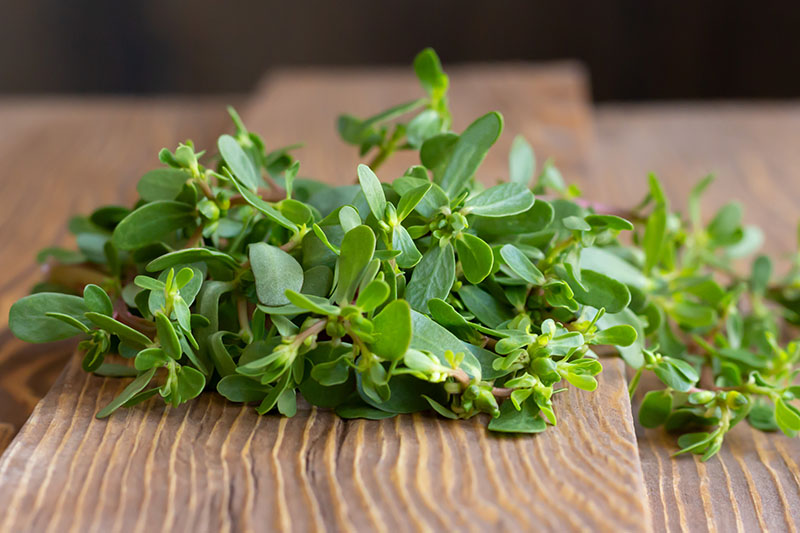
You can also dry your greens if you don’t want to use them right away. This is what I did when I decided to take on a very large patch of wild variety in my garden one year.
Dried purslane acts as a thickening agent that you can use in soups or desserts.
Take the leaves off the stems and lay them flat on a rack or cookie sheet. This is best because the leaves have a lot of water in them.
Then, using a food dehydrator or oven set to 135°F, dry them until they’re brittle.
You can now cook with them as a dried herb or blend them into a powder to put in smoothies and soups.
Many types of fish contain high levels of healthy omega-3s. But fish can be expensive, and some types of fishing have a negative impact on the environment.
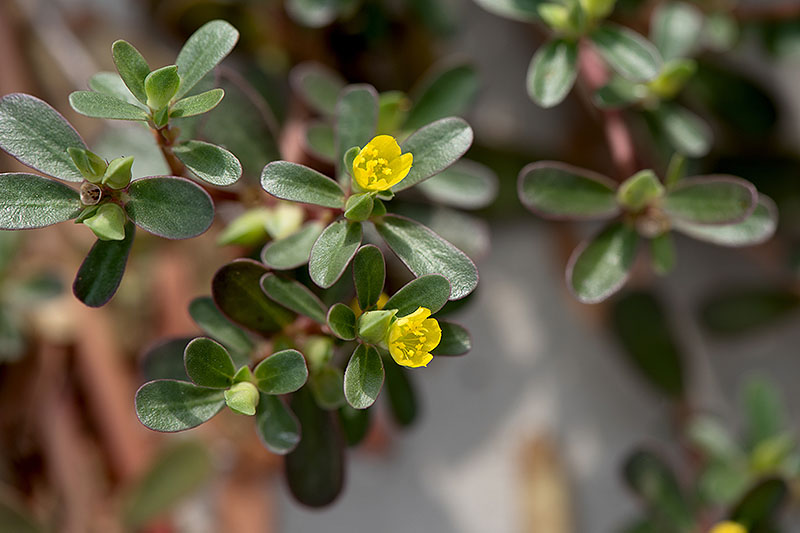
Purslane, on the other hand, contains the omega-3 fatty acids alpha-linolenic acid (ALA) and gamma-linolenic acid (LNA), with four milligrams of these per gram of fresh leaves.
If you grow your own purslane, you can save a lot of money and help the environment simultaneously! oleracea actually has more omega-3s than any other edible green plant.
The leaves and stems are mostly water, but they are also full of vitamins A and C, magnesium, iron, and potassium.
Portulaca II Will They Come Back Next Year?
FAQ
Can purslane be perennial?
Will purslane survive winter?
Does purslane reseed itself?
What is the life cycle of purslane?
Does purslane need full sun?
Purslane needs full sun to grow best. That said, if you want to encourage flower production, plant in an area that is partially shaded from the heat of the day. These plants also like it warm – the more heat, the better. If you have a hot spot next to a brick fence or cement wall where other specimens struggle, put your plants there.
Can purslane be grown year-round?
You can grow purslane year-round as a microgreen, and all summer long as a vegetable. In fact, you might find the hardest part of cultivating this tangy green is keeping it from growing a little too well.
Is purslane a perennial?
Perennial types come back year after year. Purslane is a perennial, meaning it grows year-round. It can be grown in a variety of soil types, including clay, loam, sand, peat, and organic materials such as manure, compost, or manure-based fertilizers.
How long does purslane take to grow?
Purslane seeds take between seven and 10 days to grow. You can sow seeds directly in the garden. The best time to plant purslane is late spring to early summer, but you can also plant seeds in late fall or early winter. Seeds can be sown directly into the soil or in a potting mix.
Should you buy purslane seeds?
If you buy purslane seeds to get started, you’ll likely never need to buy them again, since one plant can produce over 50,000 seeds through the course of its lifetime. You can direct sow this vigorous green outdoors, after the last frost has passed and soil temperatures reach about 60°F.
Do purslane plants like heat?
These plants also like it warm – the more heat, the better. If you have a hot spot next to a brick fence or cement wall where other specimens struggle, put your plants there. Purslane likes it best when the temperatures are above 70°F, and thrives even when it gets above 100°F.
- A Complete Guide to Caring for Yuki Cherry Blossom Shrub - January 23, 2025
- Identifying Red Hot Poker Seeds: What to Look For When Harvesting Torch Lily Pods - January 23, 2025
- A Complete Guide to Harvesting Evening Primrose Seeds - January 23, 2025
